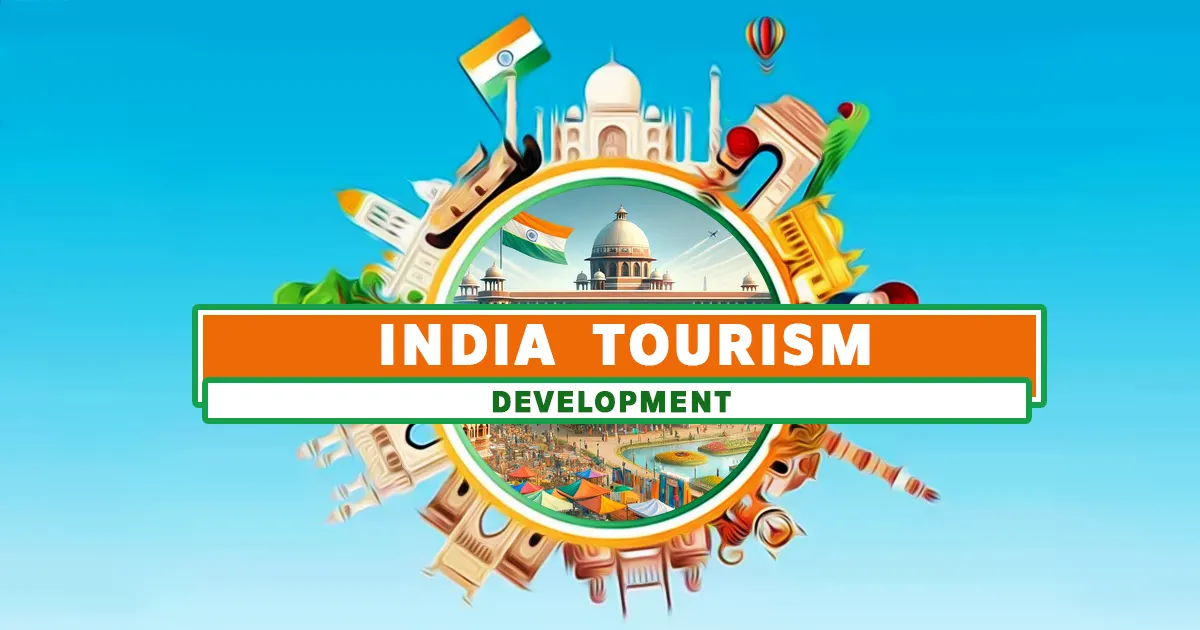
Context:
The Government of India has approved interest-free loans for 50 years to various States for the development of tourism sites and infrastructure, focusing on lesser-known destinations. This initiative aims to develop 40 new tourism projects across 23 States, reducing overcrowding at popular destinations and promoting alternative tourist locations.
Objective and Scope of the Initiative
- Development of Lesser-Known Destinations:
- The scheme encourages States to focus on developing emerging tourist destinations with significant cultural, historical, or natural value.
- Examples:
- Bateshwar (Uttar Pradesh) – A temple complex with over 100 ancient shrines.
- Ponda (Goa) – Known for its rich cultural heritage and temples.
- Gandikota (Andhra Pradesh) – Often referred to as the “Grand Canyon of India.”
- Porbandar (Gujarat) – Birthplace of Mahatma Gandhi, with potential for heritage tourism.
- Branding and Marketing:
- The initiative aims to enhance the global visibility of these lesser-known tourist centres by focusing on branding and marketing to attract international tourists.
- State Government’s Role:
- Land Acquisition: States will provide the necessary land for the development of tourism projects.
- Implementation: States are responsible for ensuring the timely completion, operation, and management of the projects after construction.
Funding and Progress Monitoring
- Funding:
- Funds will be released in two instalments:
- 66% of the allocated funds will be provided in the first instalment.
- The remaining amount will be disbursed based on the progress of the project.
- Funds will be released in two instalments:
- Progress Monitoring:
- The Ministry of Tourism will oversee the development of these projects, ensuring that they meet the set standards and timelines.
Completion Timeline
- States have been given a two-year deadline to complete the projects. This strict timeline aims to expedite the development of infrastructure and attract tourists at the earliest.
Skill Development and Employment Opportunities
- The Ministry of Tourism has signed Memorandums of Understanding (MoUs) with global hospitality chains to train Indian youth in various aspects of tourism and hospitality.
- Post-Training Employment:
- Trained youth will be absorbed by the same global hotel chains, ensuring employment opportunities and enhancing the quality of service in India’s tourism sector.
Significance of the Scheme
- Promotion of Sustainable Tourism:
- Reduces pressure on overcrowded tourist destinations by diverting tourists to new, less-explored locations.
- Boost to Regional Economies:
- The development of lesser-known destinations will generate employment, improve local infrastructure, and boost regional economies.
- Skill Development:
- Collaboration with global hospitality chains will enhance the skills of Indian youth, improving the overall service standards in the tourism industry.
- Enhancing India’s Tourism Appeal:
- With a focus on infrastructure, branding, and global marketing, India aims to become a leading global tourist destination.
Challenges and Way Forward
- Challenge: Timely acquisition of land and coordination among various stakeholders.
- Way Forward: States must streamline bureaucratic processes to ensure timely completion of projects.
- Challenge: Ensuring sustainability and environmental conservation in newly developed sites.
- Way Forward: Incorporate sustainable tourism practices and environmental impact assessments during project development.




